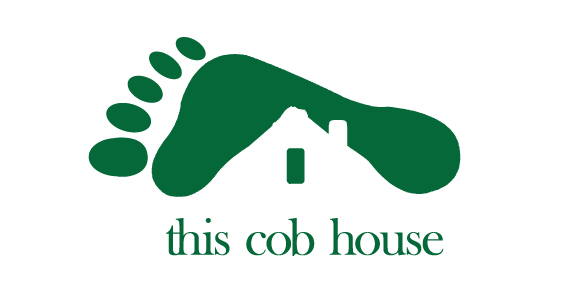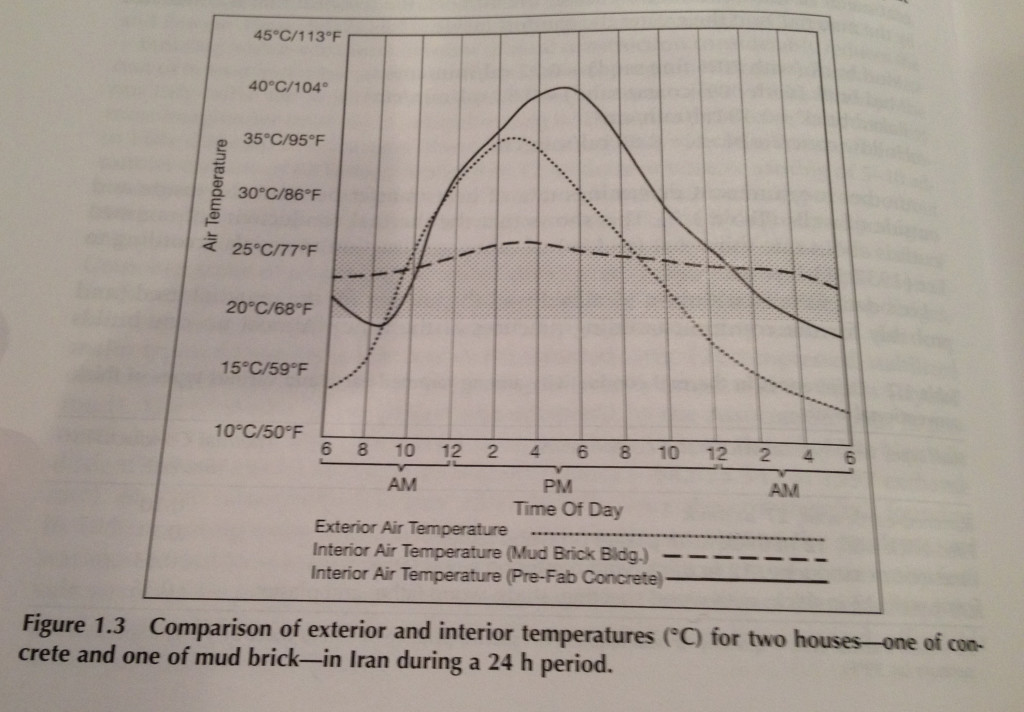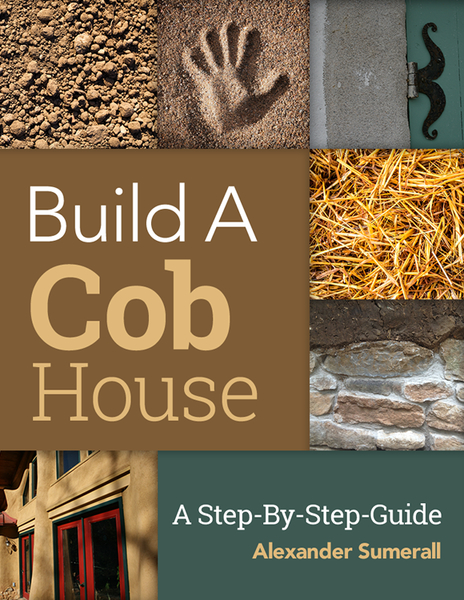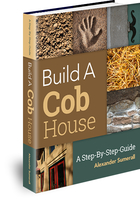Some common questions that I receive from people interested in building a cob home:
– What does the temperature feel like inside a cob house in the summer? And in the winter?
– Can I install central heating and air conditioning in my cob house?
These are very good questions!
Earth soil has proven to be a very suitable and successful building material throughout the world’s many climates. Consider that nearly half the world’s population lives in earthen dwellings. Whether the climate is harsh and arid or temperate with seasonal changes, earthen buildings are winners because of their thermal mass and heat-cool retention.
Have you ever been in your garden on a hot day and started digging down into the soil and felt the coolness beneath the ground? The temperature beneath the ground is drastically cooler on a hot summer day than above ground where you’re standing.
Also, when its cold outside you will discover warmth beneath the ground.
This is why many desert animals live underground. They can survive the blazing heat and winter freezes by burrowing and living underground.
Put bluntly, cob is a pathetic insulator. This goes for any earthen building material. But what earthen materials lack in insulation properties they make up for with thermal retention.
Cob is also a very poor conductor of heat and has very low thermal conductivity. Meaning, heat from outside has a much harder and longer time to transfer through your walls and inside your home. Cob (and other earthen materials) will absorb heat, retain it, and then dissipate it back out slowly. Most modern, conventional building materials have opposite attributes. Materials like concrete and fired brick absorb and release heat very quickly.
Cob homes have an amazing ability to regulate the indoor air temperature. Compare the indoor temperature fluctuations between a cob home and a concrete or cinder block home and you will be astonished at the results!
This chart is an example of temperature fluctuations between a concrete building and a mud brick building:
Cob is a suitable building material for hot or cold climates due to its ability to keep indoor temperatures stable. Depending on your comfort levels, this can eliminate the need for centralized heating systems and air conditioning. That’s some great energy saving potential right there!
“A mud house with walls 2 ft (0.6 m) thick, a well-insulated roof, and minimum-heat-gain doors and windows would have an indoor temperature range varying no more than about 6° – 8° F (3.3° – 4.4° C) year-round in most of the USA without central heating and air conditioning!”
– Glorious Mud, Gus W. Van Beek
Many people wonder if they can build a cob home where the winters are cold and frigid. I would not truthfully say that cob is your best option for a cold climate if you’re worried about your home getting too cold, but I would also not tell you to rule cob out as a viable option either. There are many alternative natural building materials, but you will have to weight the pros and cons of each one for your specific needs and wants.
So in conclusion, cob has some amazing temperature regulating properties! It has poor insulation value but makes up for it with its thermal retention. Cob is also a good energy saving material for homes.




